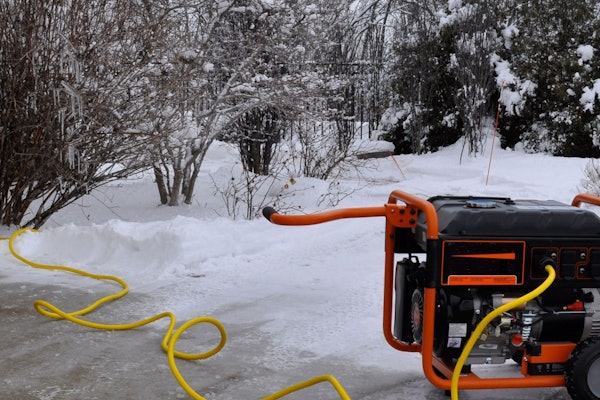 Bees swarm around their queen while they wait for scout bees to return with news of a future hive site.
Bees swarm around their queen while they wait for scout bees to return with news of a future hive site.Photo: Lars Plougman/Flickr
’Tis the season for swarming and while that’s a good thing for bees, it’s not necessarily the best news for those out working around them.
May and June are prime time for honey bees to begin to swarm. Particularly high amounts of swarming can be caused by abnormally warm weather in the spring.
“This makes the bees build up their colony strength faster,” Purdue University Professor Greg Hunt told NPR. “As soon as the weather gets good, off they go.”
Swarming is a natural part of reproduction in honey bee colonies. When a colony has grown too large for its current hive, it will begin to raise a new queen bee. The old queen bee will depart with about two-thirds of the worker bees and then find somewhere nearby to land.
The worker bees will surround the queen to keep her safe while scouts locate where their future hive should be. While the appearance of a swarm resting somewhere on a tree branch can be an unsettling sight, these honey bees are generally harmless.
“They’re not defending a hive,” beekeeper Jill Stowers said. “They don’t have a huge honey store they’re defending. They don’t have babies or pollen.”
If left alone, European honey bees don’t pose much of a threat and only swarm once or twice a season. It is the Africanized honey bees who have been making headlines lately. This species of honey bee swarms every six weeks and is highly defensive.
Unlike their European counterparts, Africanized honey bees produce more alarm pheromone, creating larger swarming attacks, and are persistent in their pursuit up to a quarter-mile.
Africanized honey bees can sense vibrations 100 feet or more from their nest and can be easily provoked by lawn mowers, string trimmers and other landscaping equipment.
Here are some tips on how to avoid being stung:
- Wear light colored clothing that covers as much skin as possible. (There’s a reason beekeeper suits are white.)
- Avoid wearing fragrant products while at work. Banana scents are especially attractive to bees.
- If a swarm begins to chase you, run in a straight line away from the bees and seek shelter indoors.
- Do not swat at the bees as this will only anger them more.
- Cover your face as you flee. Bees target the head and eyes.
- Do NOT jump in a body of water. Bees will wait until you have to surface for air.
- If stung more than 15 times or feeling ill, seek medical attention immediately.










